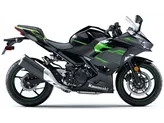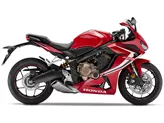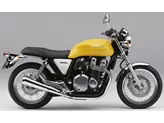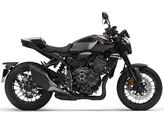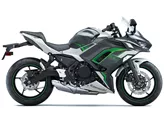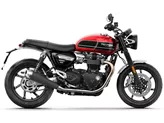Kawasaki Z900 RS 2018 vs. Kawasaki Ninja 650 2017

Kawasaki Z900 RS 2018

Kawasaki Ninja 650 2017
Overview - Kawasaki Z900 RS 2018 vs Kawasaki Ninja 650 2017
The Kawasaki Z900 RS 2018 and the Kawasaki Ninja 650 2017 are both impressive motorcycles, but they have distinct differences in terms of specifications and strengths.
Starting with the Kawasaki Z900 RS 2018, it boasts a powerful and smooth engine with an inline configuration. With an engine power of 111 HP and torque of 98.6 Nm, it offers excellent performance on the road. The bike's 948cc displacement and 10.8 compression ratio contribute to its impressive power output. The Z900 RS also features a DOHC valve system with four valves per cylinder, ensuring efficient combustion.
In terms of suspension, the Z900 RS is equipped with an upside-down telescopic fork at the front and a swing arm with a monoshock at the rear. This setup provides a balanced and comfortable ride, allowing the bike to handle various road conditions with ease. The frame is made of steel and has a tubular design, offering durability and stability.

Kawasaki Z900 RS 2018
The Z900 RS comes with advanced rider assistance systems, including ABS, ride by wire, and traction control. These features enhance safety and control while riding. The bike also has a 17-liter fuel tank capacity, ensuring a decent range for long rides.
On the other hand, the Kawasaki Ninja 650 2017 is a supersport bike that focuses on sporty performance. It is equipped with a 649cc inline engine that delivers 68.2 HP of power and 65.7 Nm of torque. The engine features a DOHC valve system with four valves per cylinder, similar to the Z900 RS.
The Ninja 650 has a telescopic fork at the front and a swing arm with a monoshock at the rear for suspension. This setup provides a playful and good-natured handling experience, making it a fun bike to ride. The steel frame with a tubular design ensures stability and control.
In terms of braking, the Ninja 650 features double disk brakes at the front with a diameter of 300mm and double pistons. This setup offers excellent stopping power and control. The bike also comes with ABS as an advanced rider assistance system, enhancing safety on the road.

Kawasaki Ninja 650 2017
In terms of weaknesses, the Z900 RS lacks a shift assistant, which can be found in some other retro bikes in its class. Additionally, it is slightly heavier than other bikes in its category, and the seat may be too soft for long tours. The lack of wind protection can also be a drawback for some riders.
The Ninja 650, on the other hand, has a relatively quiet sound from the stock exhaust, and the engine may exhibit slight vibrations. These factors may affect the overall riding experience for some riders.
In conclusion, the Kawasaki Z900 RS 2018 and the Kawasaki Ninja 650 2017 are both impressive motorcycles with their own strengths and weaknesses. The Z900 RS offers a powerful and smooth engine, comfortable seating position, and balanced handling. On the other hand, the Ninja 650 provides a sporty and playful riding experience, excellent brakes, and sharp looks. Ultimately, the choice between these two bikes depends on the rider's preferences and intended use.
Technical Specifications Kawasaki Z900 RS 2018 compared to Kawasaki Ninja 650 2017
Pros and Cons in comparison
Pros and Cons in comparison
Kawasaki Z900 RS 2018

Its four-cylinder is silky smooth while delivering enough power to make you grin under your helmet. It is also very easy to move, which should make it a great commuter bike in everyday life and serve as an iconic fun bike at the weekend. The looks find the perfect straddle of classic design and modern details to form a coherent retro package that is also a worthy tribute to Kawasaki history. It's a great naked bike with a snazzy look.
Kawasaki Ninja 650 2017

The Ninja 650 firmly stamps its predecessor (Er-6f). The engine has mastered the Euro 4 hurdle well and serves up a very usable 68 hp, the chassis is simply great for this class, and the weight reduction of 18(!) kilos compared to the ER-6f justifies reverent nods.
Price Comparison Avarage Market Price Kawasaki Z900 RS vs Kawasaki Ninja 650
There are a few key differences between a Kawasaki Z900 RS 2018 and a Kawasaki Ninja 650 2017. In terms of price, the actual average price of a Kawasaki Z900 RS 2018 is about 86% higher. A Kawasaki Z900 RS 2018 experiences a loss of 910 GBP in one year and 1,080 GBP in two years of ownership. This is offset by a loss of 390 GBP and 500 GBP for a Kawasaki Ninja 650 2017. Compared to Kawasaki Ninja 650 2017 there are more Kawasaki Z900 RS 2018 bikes available on the 1000PS.de Marketplace, specifically 28 compared to 7. It takes less time to sell a Kawasaki Ninja 650 with 96 days compared to 154 days for the Kawasaki Z900 RS. Since model year 2018 1000PS.de editors have written 26 reviews for the Kawasaki Z900 RS and 20 reviews for the Kawasaki Ninja 650 since model year 2017. The first review for the Kawasaki Z900 RS was published on 06/09/2017 and now has more than 63,700 views. This compares to more than 79,600 views for the first review on Kawasaki Ninja 650 published on 04/10/2016.





